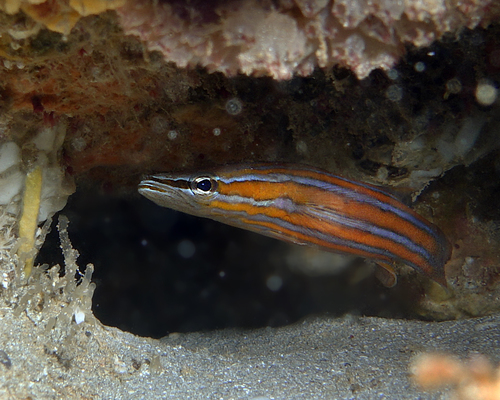
Flathead Perch
The Atlantic Bluefin Tuna (Thunnus thynnus) is a majestic and powerful fish, renowned for its size, speed, and commercial value. As one of the largest bony fish, it plays a vital role in the marine ecosystem and is a highly sought-after species in the culinary world, particularly for sushi.
5 10 years
Lifespan
12 cm
Length
Least Concern
Conservation Status
5 km/h
Swimming speed
Carnivorous
Diet
Sedentary
Migration
Appearance Overview
The Atlantic Bluefin Tuna is renowned for its large, streamlined, and torpedo-shaped body, built for speed and endurance.
Color
Dark metallic blue on top, silvery-white on the underside
Fins
Two dorsal fins, the first depressible; small finlets running from dorsal and anal fins to the tail
Body Shape
Torpedo-like, designed for efficient swimming
Length
Up to 13 feet (4 meters), commonly 6.5 feet (2 meters)
Weight
Up to 2,000 lbs (907 kg), commonly around 550 lbs (250 kg)
Diet
Carnivorous, feeding on a variety of fish, squid, eels, and crustaceans.
Feeding Behavior
Highly active predator, using their speed and agility to hunt. They often hunt cooperatively, herding and trapping prey.
Social Behavior
Forms large schools, especially during migration and spawning, but can also be found in smaller groups or solitary.
Commercial Relevance
Extremely high value, particularly in sushi and sashimi markets, where its fatty flesh is highly prized.
Conservation measures
Subject to international fishing quotas, monitoring programs, and efforts to reduce bycatch. Marine protected areas also play a role.
Status
Endangered
Threats
Overfishing, driven by high commercial demand. Illegal and unreported fishing also pose significant threats.
Habitat Distribution
Depth Range
0-1,000 meters, though more commonly found in surface to mid-waters.
Geographic Range
North Atlantic Ocean, including the Mediterranean Sea, and the Gulf of Mexico.
Preferred Environment
Pelagic, open ocean environments, preferring both temperate and subtropical waters.
Reproduction and Life Cycle
Breeding Habits
Spawns in two main areas: the Mediterranean Sea and the Gulf of Mexico. Spawning typically occurs in warm waters from May to August.
Development Stages
Eggs hatch into larvae, which feed and grow rapidly. Juveniles mature into adults over several years.
Fecundity
Highly fecund; a single female can release up to 30 million eggs per spawning season.
Maturity Age
Reaches sexual maturity at around 4-8 years, depending on location and environmental conditions.
Faqs about Flathead Perch
Where can Atlantic Bluefin Tuna be found?
Atlantic Bluefin Tuna are found in the Atlantic Ocean, ranging from the cold waters of the North Atlantic to the warmer waters of the Gulf of Mexico and the Mediterranean Sea.
How long do Atlantic Bluefin Tuna live?
They can live up to 40 years, though this is rare due to fishing pressure.
Are Atlantic Bluefin Tuna warm-blooded?
Atlantic Bluefin Tuna are warm-blooded, unlike most fish, which allows them to maintain a high body temperature and thrive in cold waters.
How fast can Atlantic Bluefin Tuna swim?
They can swim at speeds up to 43 mph (70 km/h) in short bursts.
Is fishing for Atlantic Bluefin Tuna regulated?
Yes, due to their endangered status, fishing is heavily regulated, with strict quotas and monitoring.
What do Atlantic Bluefin Tuna eat?
They primarily feed on smaller fish, squid, and crustaceans.
Do Atlantic Bluefin Tuna migrate?
They are known for their long migrations, traveling thousands of miles across the Atlantic to feed and spawn.
How many eggs can a female Bluefin Tuna lay?
Females can release millions of eggs per spawning season.
Copyright @ Nature Style Limited. All Rights Reserved.
 English
English